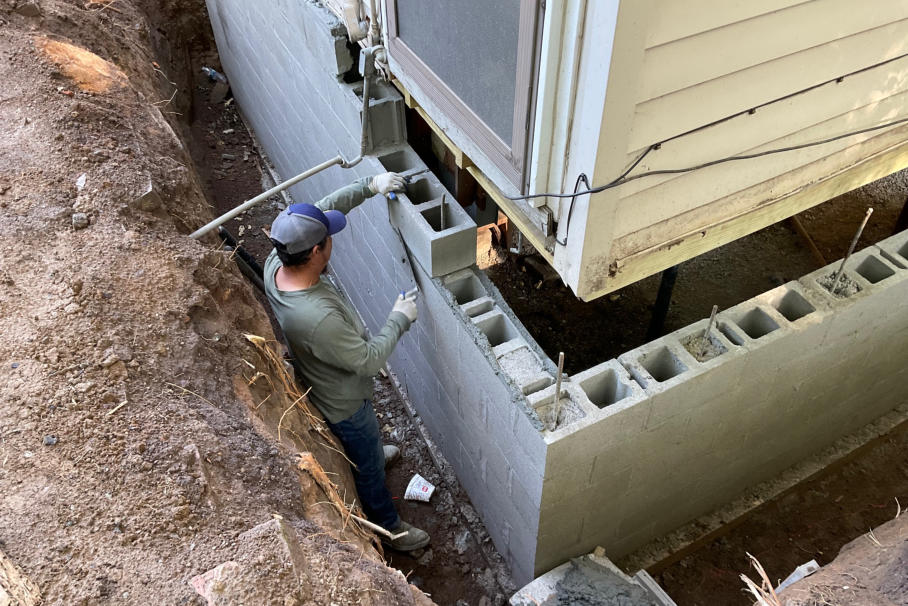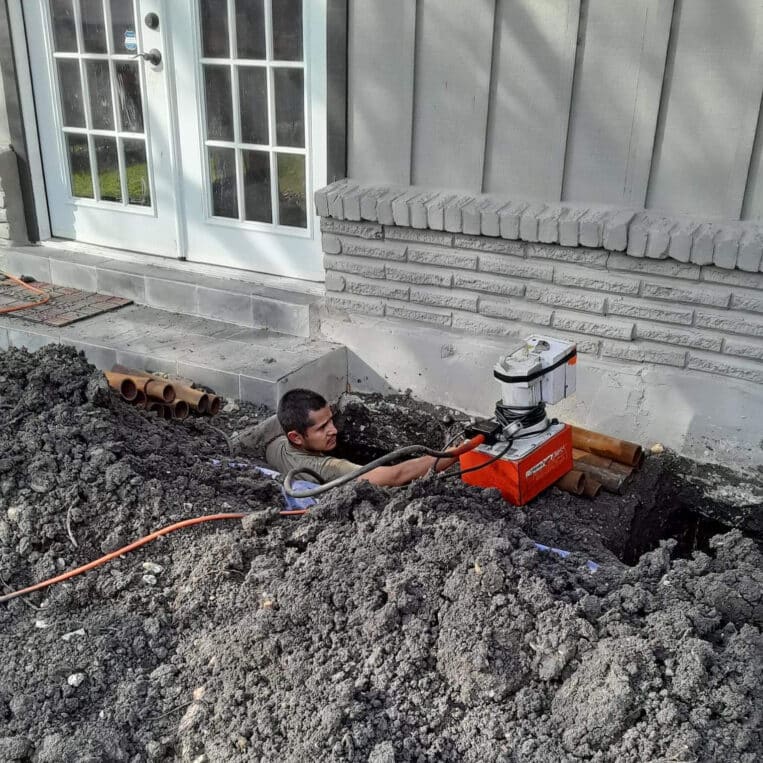Necessary Guide to Foundation Repair OKC: What Homeowners Required to Know
Wiki Article
Discovering Different Approaches of Structure Fixing for Various Dirt Types
Structure repair is a critical aspect of maintaining structural integrity, specifically when taking into consideration the diverse difficulties presented by different soil types. The intricacy of soil behavior under varying problems demands a tailored strategy to fix, guaranteeing ideal services such as helical piers for unsteady dirts or chemical grouts for cohesive layers.Comprehending Soil Kinds
Soil kinds play a crucial duty in the security and long life of structure foundations, making it crucial for property owners and building specialists to comprehend their features and habits. The communication between soil and structure can identify the architectural honesty of a structure. There are a number of soil kinds, each with unique physical residential or commercial properties that impact just how foundations are designed and maintained.Granular soils, such as sand and gravel, give good drain and are frequently taken into consideration steady. They have high load-bearing capabilities, which can support much heavier frameworks. These dirts can change if not compressed appropriately, leading to possible settlement issues. In comparison, cohesive soils like silts and clays display different habits. These dirts have a tendency to retain wetness, and their load-bearing capacity can differ substantially with modifications in moisture web content.
Rocky soils, known for their strength and security, deal outstanding support for structures however might require specialized equipment for excavation. On the other hand, fertile dirts, which are a well balanced combination of clay, silt, and sand, typically offer favorable problems for structure support due to their moderate drainage residential or commercial properties.

Understanding these soil kinds is vital for picking ideal foundation repair methods, guaranteeing the longevity and safety and security of structures with time.
Challenges With Large Clay
Amongst the numerous dirt kinds, expansive clay provides distinct obstacles for structure security because of its propensity to undertake considerable volume modifications with wetness variant. This kind of soil swells when wet and agreements when completely dry, which can put in significant stress on frameworks. These fluctuations can bring about foundation fracturing, heaving, and settlement issues, presenting substantial risks to the structural honesty of structures.The obstacles with large clay are exacerbated by its plasticity index, which measures the dirt's capacity to transform form and volume. A high plasticity index indicates greater capacity for activity, raising the chance of damage to foundations. This is specifically troublesome in regions experiencing severe or constant weather condition modifications, where cycles of damp and dry conditions prevail.
Moreover, the deepness of expansive clay layers can vary, making complex the analysis and preparation of suitable structure repair work methods. These complexities call for an extensive geotechnical evaluation to ensure effective structure repair methods are implemented, stressing the importance of attending to expansive clay difficulties with experience and treatment.
Solutions for Sandy Soils
Sandy dirts, defined by their large particle dimension and reduced cohesion, present distinct difficulties for foundation stability as a result of their propensity for moving and erosion. These buildings require specialized foundation repair strategies to make sure architectural stability. One reliable remedy is making use of deep structure systems such as helical piers or driven piles. By anchoring the foundation to deeper, more stable soil layers, these systems can offer the essential support to combat the changing nature of sandy soils.An additional suggested technique is the application of dirt stabilization methods. Chemical grouting, for example, involves injecting a maintaining agent right into the soil, which enhances communication and lowers leaks in the structure. This procedure assists to strengthen the sandy substrate, thus minimizing the threat of disintegration and movement.
Furthermore, mounting proper water drainage systems is essential in sandy dirt problems. Making certain appropriate water drainage can protect against water accumulation around the structure, which commonly intensifies erosion and soil displacement. Strategies such as French drains pipes or surface area grading can be utilized to route water away from the structure perimeter.
Dealing With Settling in Loamy Soils
Fertile dirts, known for their balanced mix of clay, sand, and silt, offer a productive base for several frameworks yet can in some cases result in foundation settling as a result of their one-of-a-kind structure. This well balanced structure offers superb water drainage and nutrient retention, making it perfect for agriculture and landscape design. This same characteristic can end up being troublesome for foundations, as shifts in moisture content can trigger the soil to broaden or contract, leading to working out.Resolving settling in loamy soils needs a complex approach. Exact soil screening is vital to establish the particular composition and wetness content of the loam. As soon as data is gathered, implementing appropriate drainage options is vital to preserve constant wetness levels, foundation repair oklahoma city thereby lowering the threat of dirt tightening or expansion. French drains or surface area grading are efficient methods to redirect water away from the structure.

Ingenious Repair Work Methods
In the realm of foundation repair, cutting-edge techniques are consistently being established to resolve the complicated challenges presented by various soil problems. As soil kinds differ substantially in their architectural properties, standard methods may not always suffice. The advent of brand-new technologies in structure repair work supplies extra tailored remedies, making certain security and longevity.One noteworthy innovation is the use of helical piers, which are particularly effective in unpredictable or large dirts (foundation repair oklahoma city ok). These piers are screwed right into the ground until they reach a secure layer of soil, using strong support for the structure over. This approach lessens disturbance and is adaptable to various dirt kinds, making it a versatile option
An additional cutting-edge technique is the application of polyurethane foam injection. This approach includes infusing high-density polyurethane foam underneath the foundation to fill up spaces and support the framework. It is a much less invasive alternative to typical support, offering fast installment with very little disruption to the surrounding location.
In addition, dirt stablizing methods, such as using chemical grouts, have acquired traction. These compounds enhance soil strength and minimize leaks in the structure, preventing future changing. Jointly, these innovative repair work techniques give reliable solutions for the varied difficulties postured by varying soil problems.
Final Thought

Structure repair service is an important element of preserving architectural stability, particularly when taking into consideration the varied difficulties positioned by different soil kinds (foundation repair Oklahoma). The complexity of soil actions under varying conditions necessitates a tailored technique to repair, making certain optimum solutions such as helical piers for unstable soils or chemical cements for natural layers. By securing the structure to deeper, much more stable soil layers, these systems can offer the essential support to combat the moving nature of sandy soils
Structure repair work needs mindful factor to consider of dirt types to make sure security and longevity. Chemical grouts boost soil stamina and decrease permeability in natural dirts.
Report this wiki page